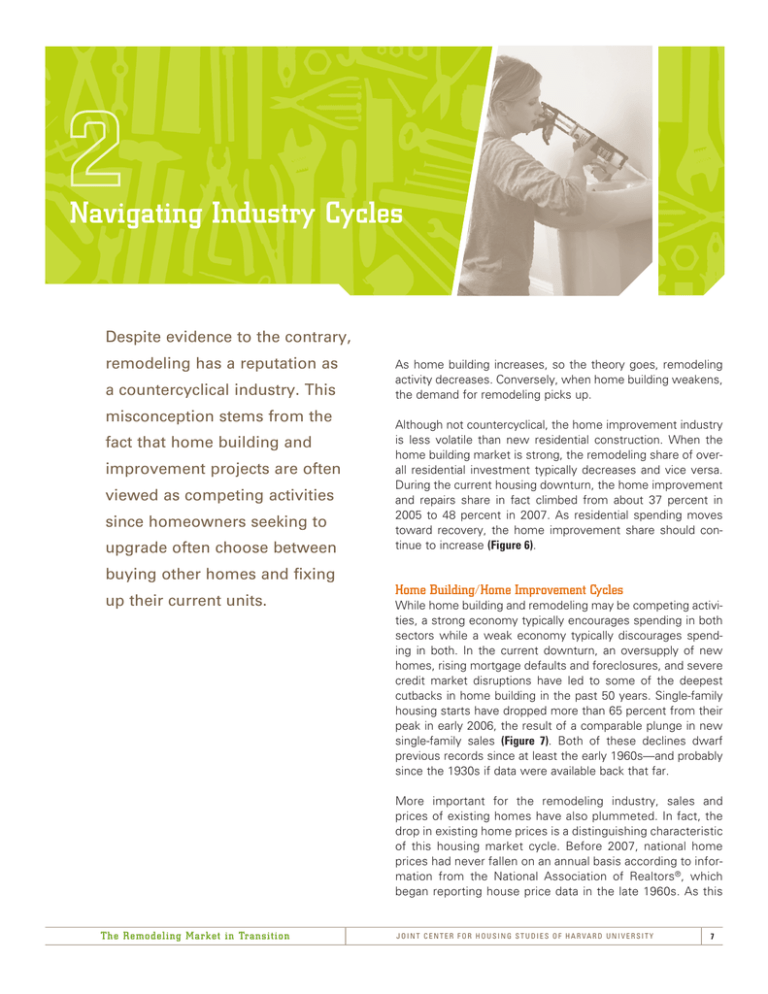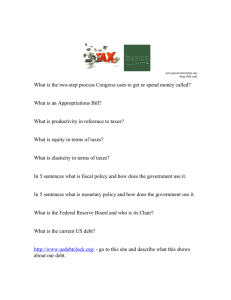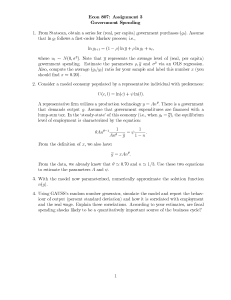Navigating Industry Cycles Despite evidence to the contrary,
advertisement

Navigating Industry Cycles Despite evidence to the contrary, remodeling has a reputation as a countercyclical industry. This misconception stems from the fact that home building and improvement projects are often viewed as competing activities since homeowners seeking to upgrade often choose between buying other homes and fixing up their current units. As home building increases, so the theory goes, remodeling activity decreases. Conversely, when home building weakens, the demand for remodeling picks up. Although not countercyclical, the home improvement industry is less volatile than new residential construction. When the home building market is strong, the remodeling share of overall residential investment typically decreases and vice versa. During the current housing downturn, the home improvement and repairs share in fact climbed from about 37 percent in 2005 to 48 percent in 2007. As residential spending moves toward recovery, the home improvement share should continue to increase (Figure 6). Home Building/Home Improvement Cycles While home building and remodeling may be competing activities, a strong economy typically encourages spending in both sectors while a weak economy typically discourages spending in both. In the current downturn, an oversupply of new homes, rising mortgage defaults and foreclosures, and severe credit market disruptions have led to some of the deepest cutbacks in home building in the past 50 years. Single-family housing starts have dropped more than 65 percent from their peak in early 2006, the result of a comparable plunge in new single-family sales (Figure 7). Both of these declines dwarf previous records since at least the early 1960s—and probably since the 1930s if data were available back that far. More important for the remodeling industry, sales and prices of existing homes have also plummeted. In fact, the drop in existing home prices is a distinguishing characteristic of this housing market cycle. Before 2007, national home prices had never fallen on an annual basis according to information from the National Association of Realtors®, which began reporting house price data in the late 1960s. As this The Remodeling Market in Transition J o i n t C e n t e r F o r H o u s i n g S t u d i e s o f H a r va r d U n i v e r s i t y 7 cycle has progressed, median home prices have continued to drop—down 13 percent nationally as of the third quarter of 2008—and are poised to slide even further. With the weakness in sales and prices, fewer households are in the market and therefore fewer buyers and sellers are making improvements to their properties. Remodeling expenditures typically rise less than residential construction spending during an upturn and decline less during a downturn (Figure 8). One recent exception was in the mid-1990s, when spending by owners on improvements declined 13 percent from peak to trough, while spending on new residential construction declined just 5 percent. Turns in the home improvement market also typically lag the construction cycle by one to two quarters. Given the severity of today’s housing market meltdown, however, the current home improvement cycle is likely to be much more severe than in recent decades. Homeowner improvement spending increased 160 percent from its mid1990s trough to its 2007 peak, but then dropped 16 percent by the third quarter of 2008. Since homeowner expenditures are still falling, the overall decline will no doubt be much more substanital before this cycle is over. Figure 6 With the Home Building Downturn, the Remodeling Share of Spending Is Increasing Improvement and repair expenditures as a share of total housing expenditures (Percent) 55 50 Increased Volatility of Expenditures The remodeling industry can be segmented into six major categories of projects. At the high end of the list are kitchen and bath remodels as well as additions to existing homes. These are often referred to as discretionary improvements because owners undertake these projects to increase the enjoyment of their homes rather than to maintain the structural soundness or efficient operation of their residences. 45 40 35 1983 1985 1987 1989 1991 1993 1995 1997 1999 2001 2003 2005 2007 Notes: Total housing expenditures include the value of construction put in place for new single-family homes, multifamily homes, and improvements and repairs to owner and rental units. Owner improvement and repair estimates prior to 1995 were extrapolated from the AHS estimates using the annual growth rates in the C-50 reports. Rental improvement and repair estimates are from the C-50 reports. The interior projects category, in contrast, comprises major improvements to or replacements of such features as insulation, flooring, paneling, and ceilings. Exterior additions and replacements include roofing, siding, windows, and doors. Replacements Source: JCHS tabulations of the 1995–2007 AHS and the 1982–2007 C-50 reports. Figure 7 By Most Measures, the Current Housing Recession Is the Worst in the Postwar Era Percent change 32 months after peak in single-family housing starts 60 40 28 20 8 5 0 -7 -20 -27 -34 -40 -60 -13 -31 -39 -26 -60 -66 -80 16 -3 -14 -24 -40 36 -100 Single-Family Housing Starts � Mid-1960s � Mid-1970s � New Single-Family Sales Late 1970s/Early 1980s � Late 1980s/Early 1990s Existing Single-Family Sales � Existing Single-Family Prices Mid-2000s Note: Percent change is computed from three-month moving averages. Sources: JCHS tabulations of the US Census Bureau, New Residential Construction Report (C-20 and C-22) and New Residential Sales Report (C-25); NAR; and Moody’s Economy.com. The Remodeling Market in Transition J o i n t C e n t e r F o r H o u s i n g S t u d i e s o f H a r va r d U n i v e r s i t y 8 to systems and equipment cover plumbing, electrical, HVAC, and built-in appliances. Outside attachments and property improvements include adding or replacing a deck, porch, garage, carport, driveway, swimming pool, and other major upgrades to the lot or yard. Finally, disaster-related home repairs make up a separate category of improvement spending. tion because consumers can save substantially by doing the work themselves—a powerful incentive particularly during recessions. In addition, many owners see working on their homes not only as a means to increase their value and improve their living conditions, but also as an enjoyable opportunity to apply their skills. Remodeling activity is also divided into professionally installed and do-it-yourself (DIY) projects. This is an important distinc- Over the last decade, the popularity of different types of remodeling activities has changed. In 1995, 33 percent of homeowner spending was for discretionary improvements such as kitchen and bath remodels and room additions. By 2007, the share of spending in this category increased modestly to 37 percent, but the composition of projects had shifted markedly. At the beginning of the decade, only 20 percent of total homeowner spending was for upper-end discretionary projects. In 2007, the share had increased to 30 percent as owners on average sharply expanded the scope of their home improvements (Figure 9). Figure 8 This Remodeling Downturn Is More Severe than in Previous Cycles, But Still Less Drastic than in Home Building Percent change in spending Owner Improvements Figure 8 Single-Family Construction Previous Previous Cycle Remodeling Trough Peak Is More Trough Severe Peak *Estimates as of 2008:3. This Downturn Source: Census Bureau, C-30 reports. TimeUSPeriod to Peak to Trough to Peak than in Previous Cycles, But Still Lessto Trough Drastic Building 1980s/Early than 1990s in Home 127.6 -17.0 200.7 -20.2 Percent change in spending Mid-1990s 26.2 -13.0 66.5 -5.4 Current 160.0 -15.5* 193.1 -52.6* Meanwhile, the share of expenditures on interior replacements nearly doubled. These projects are often undertaken in conjunction with kitchen and bath remodels, additions, and interior alterations. This increase compensated for significant declines in the shares of exterior replacements and property improvements, which are typically more stable from year to year. The net result is that more expensive home improvement projects accounted for a larger share of market activity in 2007 than in 1995. *Estimates as of 2008:3. Source: US Census Bureau, C-30 reports. Figure 9 The Shift to Upper-End Discretionary Projects Fueled the Spending Boom, Contributing to Increased Cyclicality Share of homeowner improvement spending 1995 2007 6% 6% 20% 22% 13% 12% 7% 20% � � � � � � Upper-End Discretionary � Disaster Repairs Mid-Range Discretionary 17% 30% Interior Replacements Exterior Replacements Systems & Equipment Property Improvements & Outside Attachments 12% 7% 16% 12% Notes: Expenditures it are inflation-adjusted i fl ti dj t d to t 2007 dollars d ll to t compare equivalent i l t spending levels for upper-end and mid-range discretionary projects. t U Upper-endd di discretionary ti projects j t iinclude l d major j kitchen and bath remodels as well as room additions and alterations over $25,000. Mid-range discretionary projects include minor kitchen and bath remodels as well as room additions and alterations under $25,000. Major kitchen remodels are defined as $10,000+ if done professionally and $4,000+ if DIY. Major bathroom remodels are defined as $5,000+ if done professionally and $2,000+ if DIY. See Table A-1 for other category definitions. Source: JCHS tabulations of the 1995 and 2007 AHS. The Remodeling Market in Transition J o i n t C e n t e r F o r H o u s i n g S t u d i e s o f H a r va r d U n i v e r s i t y 9 While the emphasis on high-end projects helped to boost improvement spending to its recent heights, it also suggests that the current downturn will be sharper than usual. Upperend discretionary projects are more volatile than mid-range projects because most owners feel comfortable undertaking major projects only when economic conditions are favorable. Similarly, improvement spending in general is more volatile than maintenance and repair spending because the projects tend to cost more. The mix between DIY and professional home improvement projects provides some explanation. DIY projects are heavily concentrated in discretionary categories that have higher average costs. Between 1995 and 2007, 43 percent of DIY expenditures were for discretionary projects. The comparable share of expenditures for professionally installed projects was only 32 percent. As a result, as owner spending shifted toward discretionary projects over the decade, the DIY share of activity also increased—generating more growth but greater volatility in year-to-year spending. The volatility of spending in the major remodeling categories differed considerably between 1995 and 2007. Growth in total maintenance and improvement spending averaged just under 6 percent annually over this period, ranging from 1 percent in 2002–2003 to 13 percent in 2004–2005. At the same time, spending on upper-end discretionary projects averaged 11 percent annual growth but was much more volatile from year to year. In contrast, spending on replacements grew significantly less but was more stable (Figure 10). The Outlook The current remodeling cycle is more severe than in recent decades, largely because of the growing share of expenditures on upper-end discretionary projects. The retreat in homeowner spending should, however, be less drastic than that in new residential construction spending for several reasons. First and foremost, overbuilding in the housing market contributes to sharper cycles. When excess housing supplies develop during an upturn, they inflate growth; as inventories are worked off during the downturn, the excess units understate true market demand. In the home improvement market, however, excess supply is not a factor. Do-It-Yourself Activity The strong growth and increased volatility in home improvement spending earlier in the decade coincided with a growing share of do-it-yourself activity. This trend is counterintuitive since DIY projects are typically less expensive than professionally installed projects, which include the costs of labor, overhead, and profits in addition to materials. A second reason for more moderate remodeling cycles relative to new construction is that spending in large segments Figure 10 Spending on Upper-End Projects Has Been Strong But Volatile in Recent Years Average annual growth in homeowner remodeling expenditures (Percent) 30 25 23 20 19 17 14 15 11 10 7 5 5 7 4 0 -5 -5 -10 -5 9 6 2 13 2 4 0 6 1 4 4 1 3 4 6 6 1 -2 -9 -15 Upper-End Discretionary � 1997 � 1999 � 2001 Mid-Range Discretionary � 2003 � 2005 � Replacements Maintenance & Repairs Total 2007 Notes: Expenditures are inflation-adjusted to 2007 dollars to compare equivalent spending levels for upper-end and mid-range discretionary projects. Upper-end discretionary projects include major kitchen and bath remodels as well as room additions and alterations over $25,000. Mid-range discretionary projects include minor kitchen and bath remodels as well as room additions and alterations under $25,000. Major kitchen remodels are defined as $10,000+ if done professionally and $4,000+ if DIY. Major bathroom improvements are defined as $5,000+ if done professionally and $2,000+ if DIY. Replacements include interior and exterior projects, as well as systems and equipment. Maintenance and repairs include routine preservation projects, such as painting and minor repairs intended to keep the property in normal working condition. Source: JCHS tabulations of the 1995–2007 AHS. The Remodeling Market in Transition J o i n t C e n t e r F o r H o u s i n g S t u d i e s o f H a r va r d U n i v e r s i t y 10 of the home improvement market—exterior replacements, system upgrades, and disaster repairs—varies little from year to year, effectively creating a floor under expenditures. While upper-end discretionary projects are responsible for most of the volatility in homeowner spending, even at their inflated 2007 share, these projects accounted for 30 percent or less of total expenditures. As a result, even if some discretionary projects were deferred and others were downsized, the impact on overall remodeling expenditures would be much more modest than the decline to date on the construction side. ers can recoup in higher house values are likely to dampen enthusiasm for discretionary home improvement projects— particularly at the upper end of the market. Instead, project activity is likely to shift back toward exterior replacements and system upgrades, which tend to be most cost-effective in terms of generating energy savings. More basically, many home components need periodic replacement as they wear out or fail. Since professionals traditionally install the majority of these replacements and upgrades, the share of spending on professional services should increase even with greater stability in overall home improvement spending. Over the longer term, more modest house price appreciation and the declining share of home improvement costs that own- The Remodeling Market in Transition J o i n t C e n t e r F o r H o u s i n g S t u d i e s o f H a r va r d U n i v e r s i t y 11


